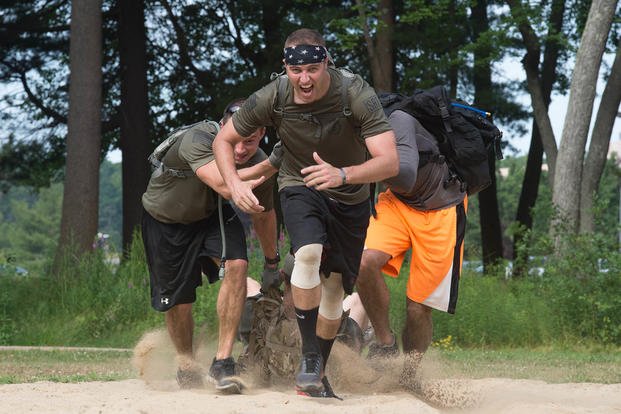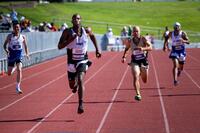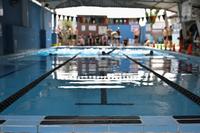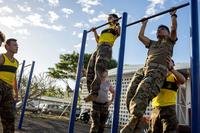If you are considering a job that requires a certain level of fitness to get to and through military, police and firefighter training (aka Tactical Fitness), you need to assess your athletic and training history. Reviewing past training programs, sports, events and especially your injury history will help guide you to assessing your strengths and weakness along the athletic spectrum.
If you are considering a tactical profession, being good at all elements of fitness is critical to your ability to endure challenging training programs.
You do not need to be great at any of them, just good at all of them. The ability to perform optimally one day will save your life, your buddy's life or the life of a victim you are trying to rescue. This rescue could require endurance, strength, muscle stamina, grip and, of course, your ability to think under pressure.
The elements of fitness include strength, power, endurance, grip, muscle stamina, speed, agility, hand-eye coordination, mobility and flexibility. You also may need to master certain skills like running longer distances, rucking heavily weighted backpacks, and swimming long distances and other aquatic skills that include treading, floating, SCUBA, underwater and general comfortability in stressful situations.
Speed and endurance: Run and ruck farther and faster. Unless you are an endurance athlete, running anything more than 100 meters may be considered long distance to you. If that is the case, focus on your running progression. For an endurance athlete with no strength training background, rucking 50+ pounds in a backpack may be a great equalizer to someone who weighs 50 pounds more than you. Focus on lifting to build core and leg strength and muscle stamina for rucking.
Strength and power: Lift equipment, gear and people, too. If you are a powerlifting football player, it is likely you have all the strength you need, but lack muscle stamina and cardiovascular endurance in running, swimming and rucking. Focusing on more of an endurance training plan like triathlon training is a good option as the two non-impact cardio events (swimming and biking) will help as your running and rucking progresses and enable you to cross-train without overuse injuries. This type of training likely will help you to lose unneeded weight/bulk, as well as aid in faster runs, easier pull-ups and more. Do not neglect your core strength for lifting movements. If your exercise history lacks strength training, add it to your current plan.
Flexibility and mobility: Move easily over uneven terrain and between obstacles. Unless you stretch daily in your previous and present routines like a gymnast, chances are you are not as flexible or mobile as you could be. Yoga-based stretching, foam rolling, and dynamic and static stretching should be done daily for at least 10-15 minutes -- some days more. See Mobility Day Off.
Muscle stamina: Move yourself and gear up, over, under and through space. Athletes like wrestlers, gymnasts and boxers typically do really well with high-repetition, body-weight movements. High-repetition calisthenics likely will be a requirement in your testing to get into a training program with a fitness test. The follow-on training also may require hundreds of repetitions of push-ups, abdominal exercises, squats and other calisthenics as well. Focusing on higher-repetition calisthenics for the core (sit-ups, flutter kicks, other) also is needed, but strength for team log, boat or heavy equipment carries will require a combination of strength and muscle stamina. See PT Progressions – Five Part Series for ideas.
Grip strength: Hold gear, climb rope or a mountain, and grab things and people without tiring. Holding on to gear and people while climbing ropes and obstacles requires grip strength and stamina. See Tactical Operator Grip workout ideas for more exercises to add to your routine. Unless you are a rock climber, wrestler or other athlete where grip is critical to your performance, you need to work on it. Like the elements of endurance and flexibility, grip strength is easily lost without practicing it.
Skills: Swimming well is required in many tactical professions; being a world-class swimmer is not. Being competent and confident in the water is most important, but swimming long distances should be mastered. How Good Do You Have to Be? You may be strong and fast on land, but if you are incapable of swimming, you could be ineffective at doing your job one day or rescuing a family member if they find themselves in a bad situation in the water.
Other skills: Hand-eye coordination is important in the tactical fitness realm. Shooting, moving, swinging sledgehammers and so many other events will require a certain level of hand-eye coordination and athleticism.
Chances are, you have a weakness. Take a hard look at your athletic history and consider your previous injuries. Are they healed and in balance with other muscle groups and joints? Ask yourself hard questions about your weaknesses. Take a fitness test and see for yourself. The Tactical Fitness Dirty Dozen addresses every element of fitness and will challenge the most capable of tactical athletes. Consider the book series Tactical Fitness and engage all the elements of fitness into one program.
Stew Smith is a former Navy SEAL and fitness author certified as a Strength and Conditioning Specialist (CSCS) with the National Strength and Conditioning Association. Visit his Fitness eBook store if you’re looking to start a workout program to create a healthy lifestyle. Send your fitness questions to stew@stewsmith.com.
Want to Learn More About Military Life?
Whether you're thinking of joining the military, looking for fitness and basic training tips, or keeping up with military life and benefits, Military.com has you covered. Subscribe to Military.com to have military news, updates and resources delivered directly to your inbox.



















